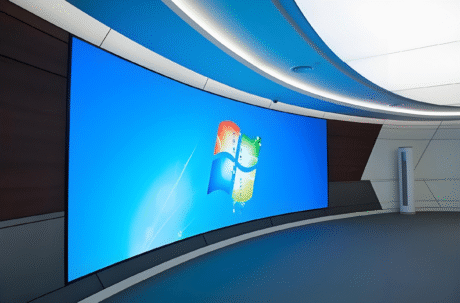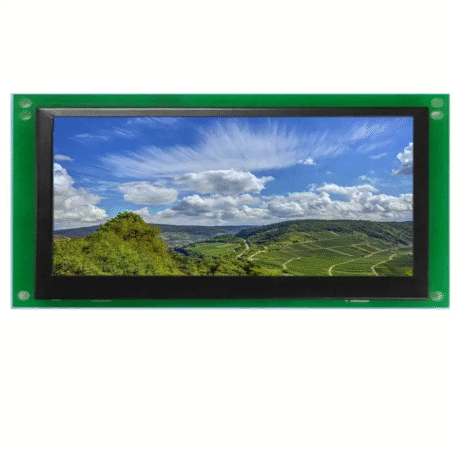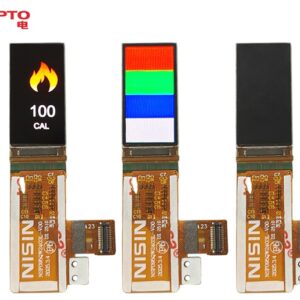LCD display is generally used for home appliances, consumer products, or indoor products, while LED display is almost always used for outdoor advertising. Portanto, this point can basically distinguish the difference between LED display and LCD display.
In terms of display technology, LED display and LCD display are essentially different. Although both can be used to display images, the core difference between LED display and LCD display lies in the backlight technology and display principle.
1. Basic principles and structure
Projeto | LCD display | LED display |
Driving principle | When illuminated by a backlight source, liquid crystal molecules control light transmission or blocking by changing the electric field | Each pixel is composed of a self-luminous light-emitting diode (LIDERADO), which emits light when powered on |
Structure | ① Backlight source (LED light source) ② Liquid crystal layer ③ Color filter ④ Driver IC ④ FPC cable | ① LED lamp bead combination ② Power supply/drive circuit |
Display mode | “Passive” allows backlight to pass through liquid crystal and filters to form an image | “Active” self-luminous, no additional backlight required |
2. Image quality
Specifications | LCD (including IPS-TFT) | LIDERADO (dot matrix/small pitch) |
Brilho | 300–500 cd/㎡ (common laptops/TVs) | 500–10 000+ cd/㎡ (large outdoor screens can reach thousands) |
Contraste | 1000:1–3000:1 (depending on the panel type) | 3000:1–10 000:1 (when the pixel is pure black, it will turn off when the power is turned off) |
Cor | The color gamut can generally reach sRGB 100% (IPS high-end) | The smaller the dot pitch, the finer the color; large outdoor screens are mainly bright |
Ângulo de visão | Viewing angle can reach 170–178° (IPS) | Viewing angle is very wide, almost close to 180° |
Refresh/Scanning | Refresh rate 60–240 Hz | Scanning method determines contrast and brightness; high-end can reach 3840 Hz+ |
3. Key Differences
Comparison items | LCD (including LED backlight) | LED direct display screen |
Brilho | Depends on backlight, low brightness (300-600 lêndeas). | Self-luminous, extremely high brightness (1000-5000 lêndeas), suitable for outdoor use. |
Contraste | Limited by the backlight, the static contrast ratio is about 1000:1. | Infinite contrast ratio (black can be completely turned off). |
Grossura | Backlight layer is required, which is relatively thick (especially CCFL backlight). | Modular design, flexible thickness (can be made into ultra-thin or spliced screens). |
Power consumption | High (backlight is always on). | Illuminates on demand, and power consumption is extremely low when displaying black. |
Lifespan | Backlight lifespan is about 50,000 hours, and backlight attenuation may occur. | LED lamp beads have a long lifespan (about 100,000 hours), but individual lamp beads may be damaged. |
Resolução | High resolution is easy to achieve (such as 4K/8K). | The pixel pitch is large, and high resolution requires a larger size (suitable for long-distance viewing). |
Cenários de aplicação | Mobile phones, TVs, computer monitors and other consumer electronics. | Outdoor advertising, stage backgrounds, commercial large screens (long-distance viewing). |
4. Lifespan and stability
· LCD: Backlight lifespan ~30,000–50,000 hours; brightness and contrast will decrease after the liquid crystal layer ages.
· LED: High-quality LED lamp beads can have a lifespan of 50,000–100,000 hours; color and brightness decay slowly.
5. Size and application scenarios
Type | Advantages | Typical applications |
LCD | LCD Low cost, high pixel density, fine picture | Mobile phones, comprimidos, notebooks, TVs, dashboards, industrial control screens |
LIDERADO (large pitch) | Simple structure, extremely high brightness, strong light resistance | Outdoor advertising screen, large screen in sports stadiums, stage background screen |
LIDERADO (small pitch) | Fine pixel pitch, good image quality for close viewing | Large screen in indoor conference rooms, TV studio background, exhibition display screen |
6. Cost comparison
- LCD module: From dozens of inches of TV to mobile phone panels, there are mature production lines with low unit cost.
- LED display: small pitch (P0.9-P2.5) is expensive; large pitch (P4 and above) is relatively economical, but not as fine as LCD.
7. Resumo
- If you need high pixel density, delicate colors, close viewing, and limited budget, LCD (TFT-LCD) is preferred.
- If you pursue extremely high brightness, amplo ângulo de visão, outdoor weather resistance, and accept higher power consumption and cost, you should choose LED display; small pitch LED can meet the needs of high image quality indoors, and large pitch LED is suitable for long-distance outdoor advertising.





